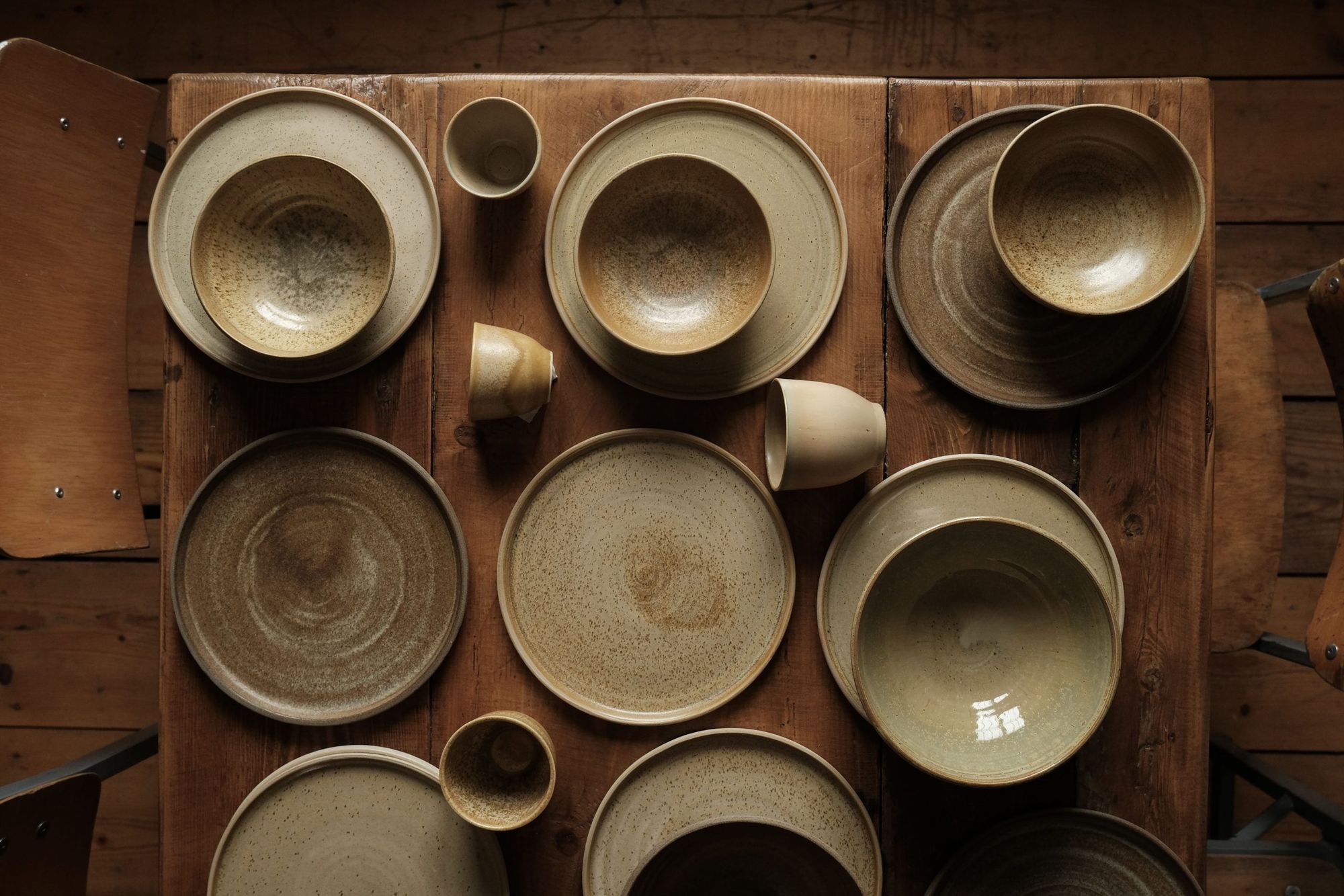What’s the difference between a unique, locally handcrafted plate and its mass-produced counterparts? Do we find it easier to grow attached to food and objects when we know who made them? At the end of last year, Dávid Kárai and Máté Kovács debuted a joint ceramics collection, and the food blogger and ceramicist introduced us to a common intersection of local gastronomy and design: the world of handmade dinnerware.
Dávid Kárai’s name might ring a bell to readers of gastronomic content, we wrote about him in relation to his publication last year. His cookbook, “Ki mint vet” (“Reap what you sow”—free translation) is more than just a cookbook. It is a story of fifteen Hungarian farmers and small entrepreneurs, with recipes based on the ingredients they produce. In the course of the book’s production, embracing local communities and creators has become a mission for David, which has motivated him to continue in the field of gastronomy, but to include the work of small local businesses in his work as a value-added communicator.
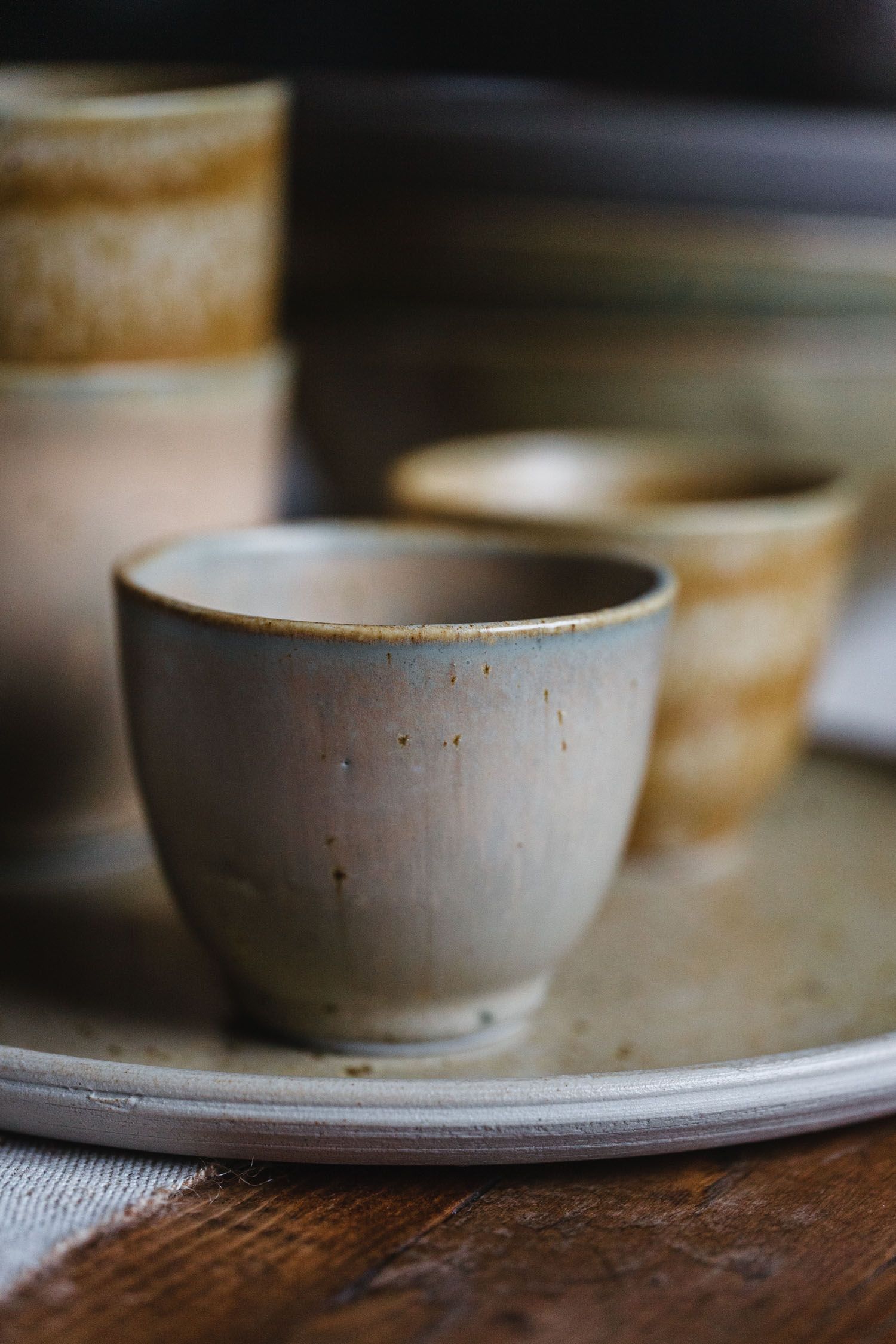
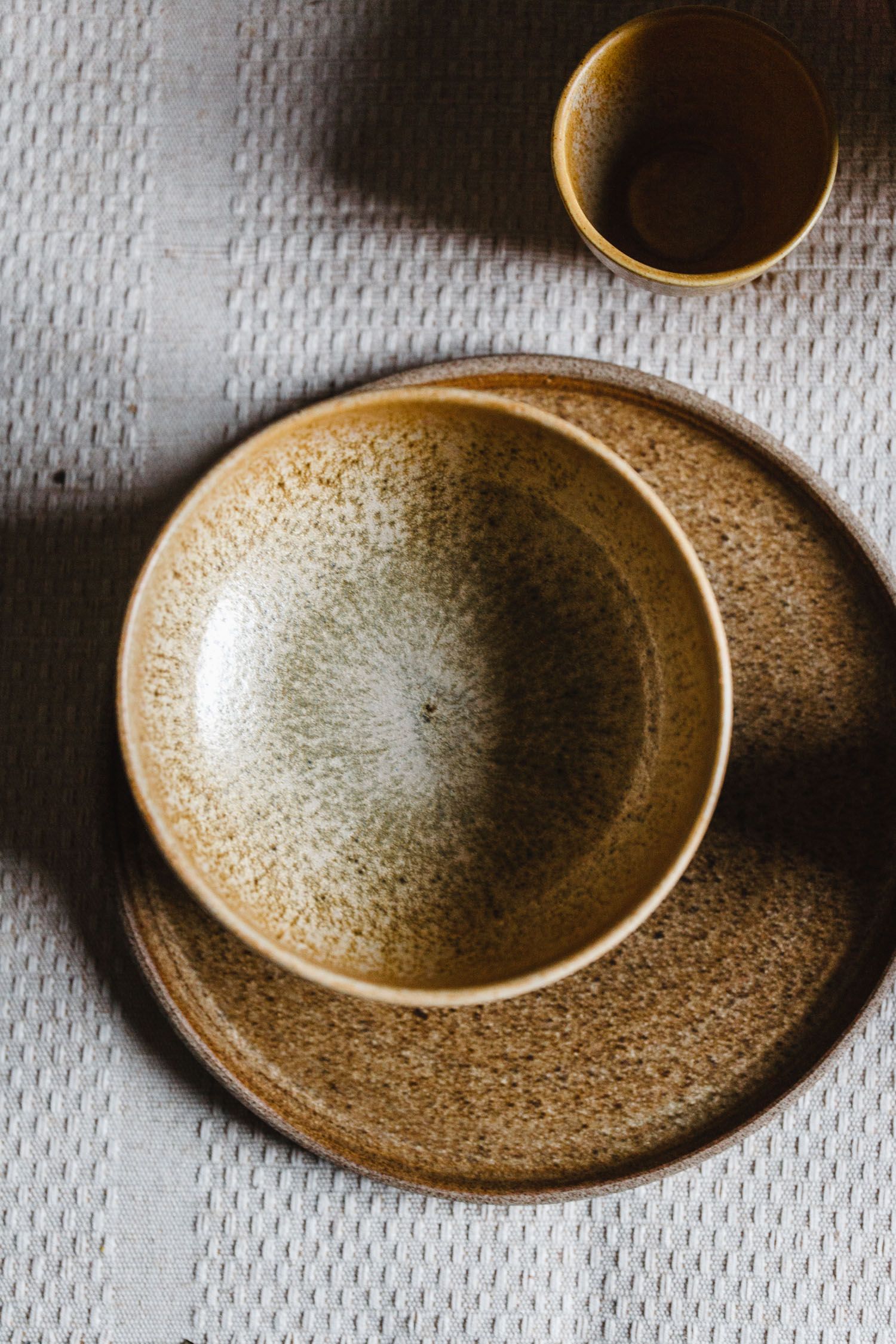
In his first collection, in collaboration with a local designer, he focused on food-related objects. Over the years, Dávid has collected many accessories and photography tools, so he is at home in the world of tableware and cutlery, with several ceramic pieces by local designers on the kitchen shelf. His expertise in the typography of tableware means he knows exactly what makes a good plate or a cup.
“I like the big soup plates, because they make it easy to slurp noodles, salads and nutritious Asian soups. I like a flat plate that’s not too big, has a rim and is durable so it can easily go in and out of the dishwasher. I like being able to stack the cups on the shelf to save space. I like a cereal bowl that is big enough for a portion of cream soup,” Dávid concludes.
On the recommendation of ceramicist Enikő Kontor, he asked Máté Kovács (Conceptual Ceramics) for the refinement and realization of the ideas. With more than ten years in the ceramics profession behind him, Máté adapted to the task professionally and started the design with his characteristic experimental attitude.

“The glaze on the surface of the ceramics is my own recipe. I also played around with slight variations and the heat level during firing. In this way, the same glaze composition and shape has been used to create a varied look, which is the real beauty of handmade objects. Even though they are small batches, they are not comparable to products made on an assembly line—each one has its own personality, which makes the user feel more connected to them,” Máté points out.
The collection consisting of cups, bowls, plates and soup plates was named Aurōrae, as the patterns of the ceramics evoke the aurora. As Dávid describes, “handcrafted objects are never identical, they are as infinite as the sky.” The objects were made in limited editions of 40-40 pieces, and although Máté also works on individual commissions, the combination of glazes and shapes used in the collection is only available in collaboration with Dávid. The glasses are made of cast porcelain, the plates of stone tile, the latter in cream and grey masses, with the same glaze, but with different results. Dávid’s favorite is the soup bowl, which he says is a real multifunctional piece, as it can hold a more nutritious soup, but also a salad or pasta dish.
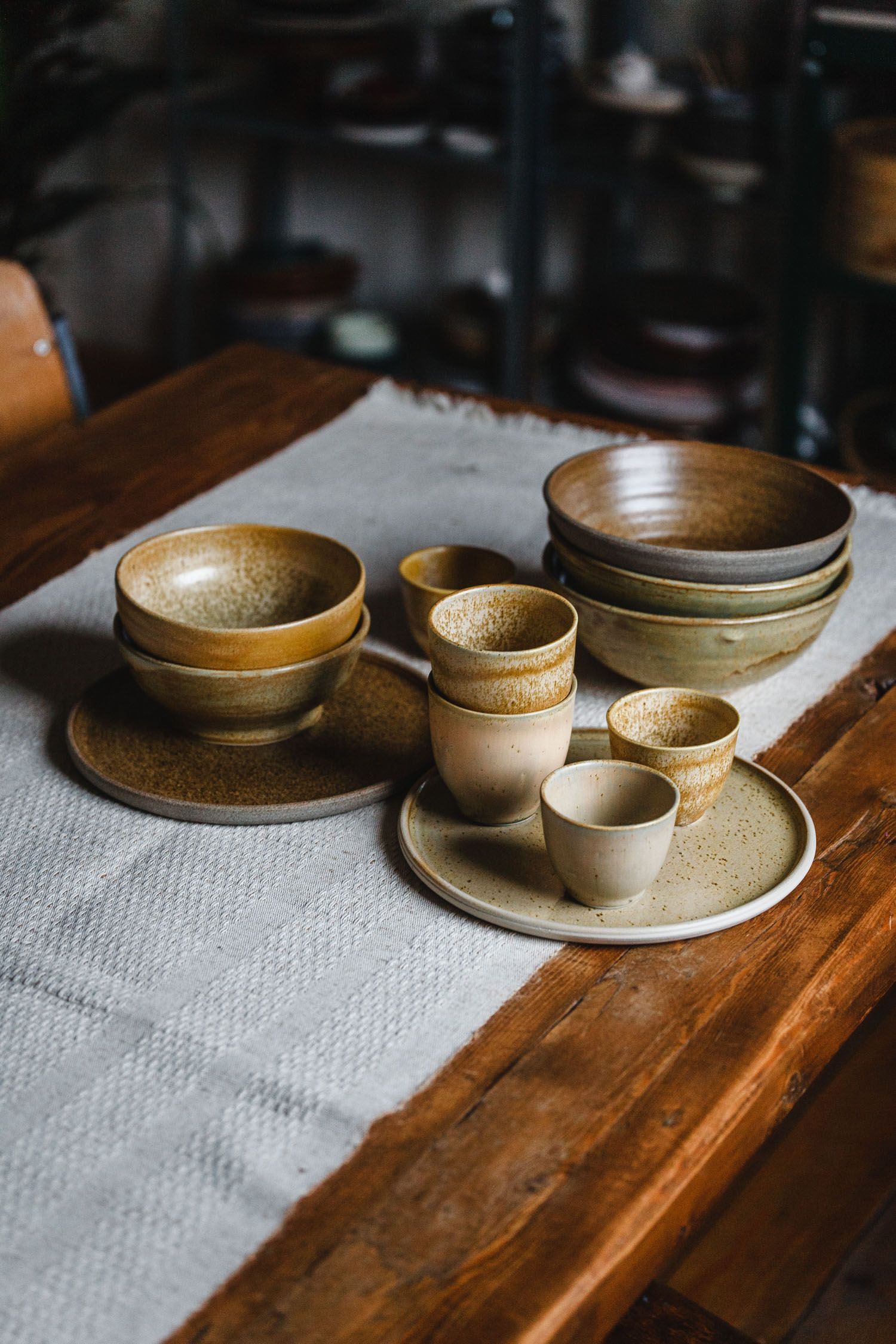

But what are the roles of unique collections in contemporary object culture? What do they express and how do they evolve from unique privileges into more and more popular mass products? The growing popularity of tableware made by Hungarian ceramists can be explained in different ways. According to Máté and Dávid, one of the reasons is the renaissance of ceramics and the growing interest in gastronomy that started a few years ago, as well as the fact that more and more restaurants serve their dishes on handmade plates, as guests feel the difference of eating from a table set with carefully designed objects. Besides, there’s a ritual associated with the use of special cutlery, which is gradually fading in a hectic week of takeaway boxes and fast food:
“In our grandparents’ time, the Herend china was taken out of the sideboard for special occasions. Nowadays, it may not be a classic set, but objects designed and made by domestic ceramists that are taken off the shelf when we want to set the table nicely and show that we are not sitting down to eat for two minutes for a change, but to give a way to enjoy a meal together that is worthy of relaxation,” says Máté.
Dávid, who is not an average user by profession, is less inclined to use specific products for special occasions and says that on a typical weekday, he will find these products on his shelf for a simple tomato pasta. Although they are priced higher than products from a global chain, Aurōrae still falls within the range of collections that are available at a reasonable price for both the contractor and the customer. And according to Dávid, you don’t need to buy a set of twelve dinnerware sets straight away, even a set of four can be perfectly adequate for a household. “We don’t necessarily need to stock up on a huge variety of these items, but rather look for what really suits our needs and tastes,” he says. Aurōrae is available through Dávid Kárai’s webshop while the stocks last, and in the meantime, the next collaboration with another designer is already in progress. “We are currently working on a picnic backpack with a domestic design. For me, the most important question, even with this type of object and the picnic bags, is what do we do with it at the end of the season, in the winter? When we design our own product, we try to answer that, too,” Dávid reveals.
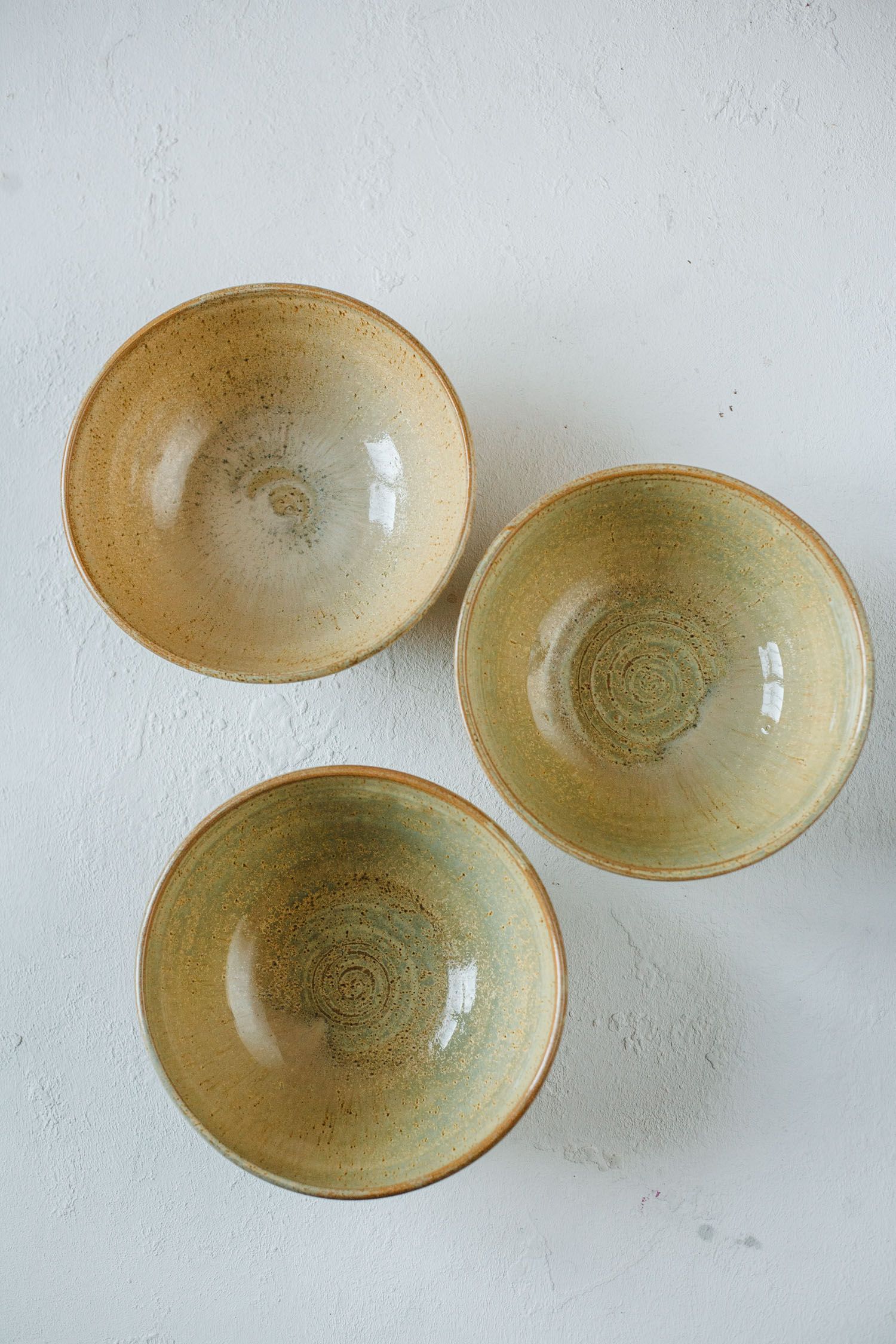
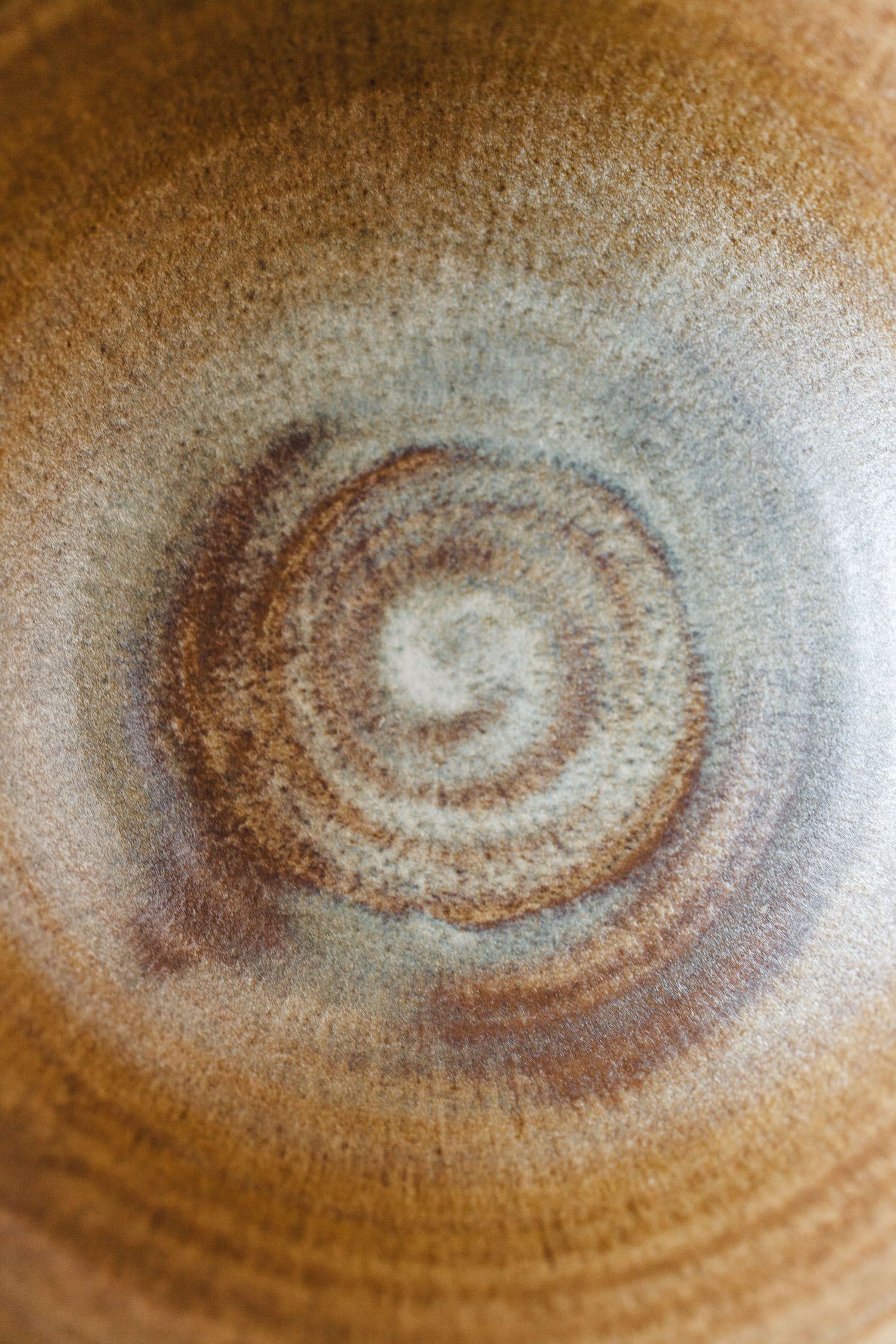

Dávid Kárai | Web | Facebook | Instagram
Conceptual Ceramics (Máté Kovács) | Web | Facebook | Instagram

Entertaining, value-preserving and green—that’s a modern restaurant! | Piqniq pack—Part 8

Beyoncé's memorable Oscar performance has Hungarian ties too










